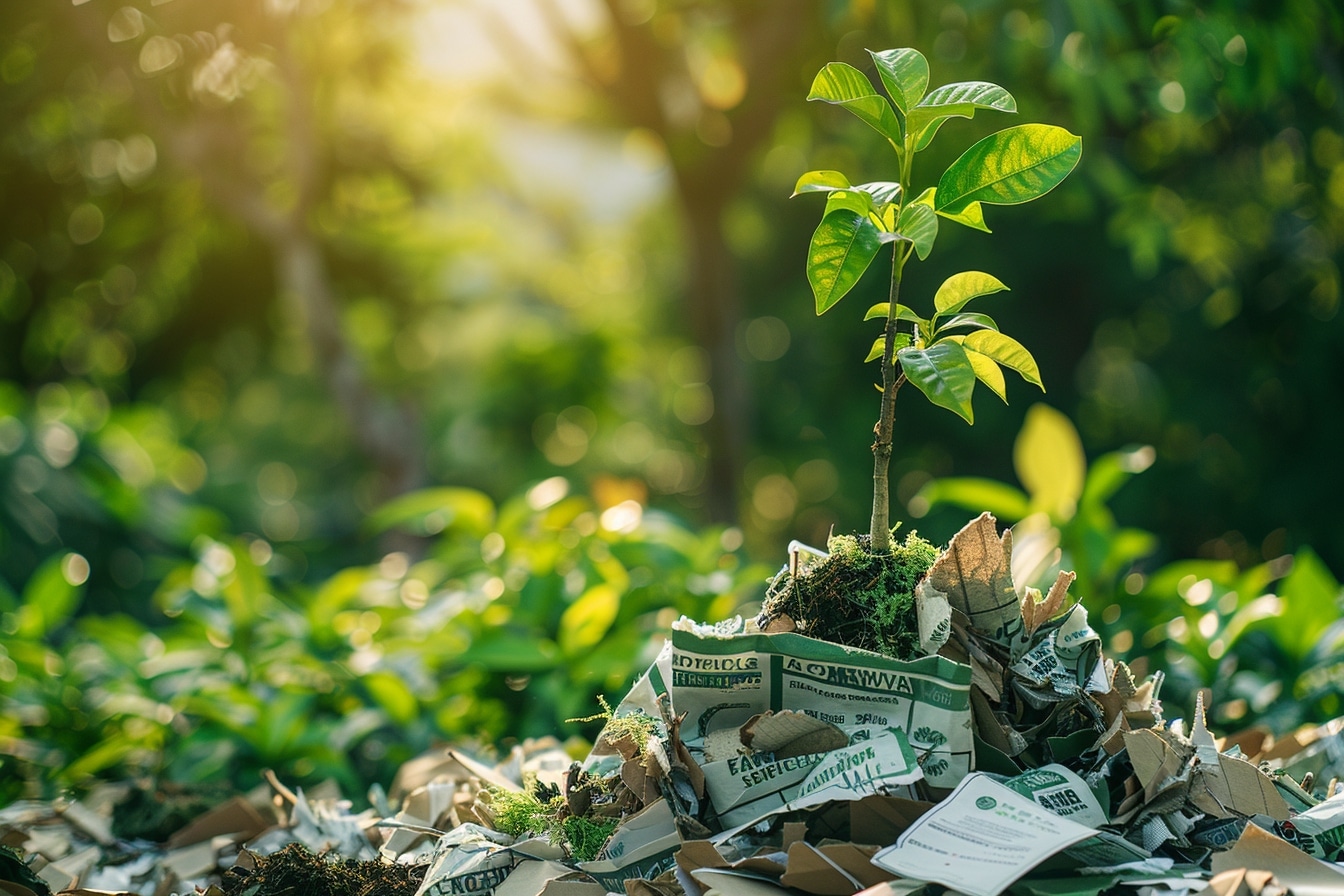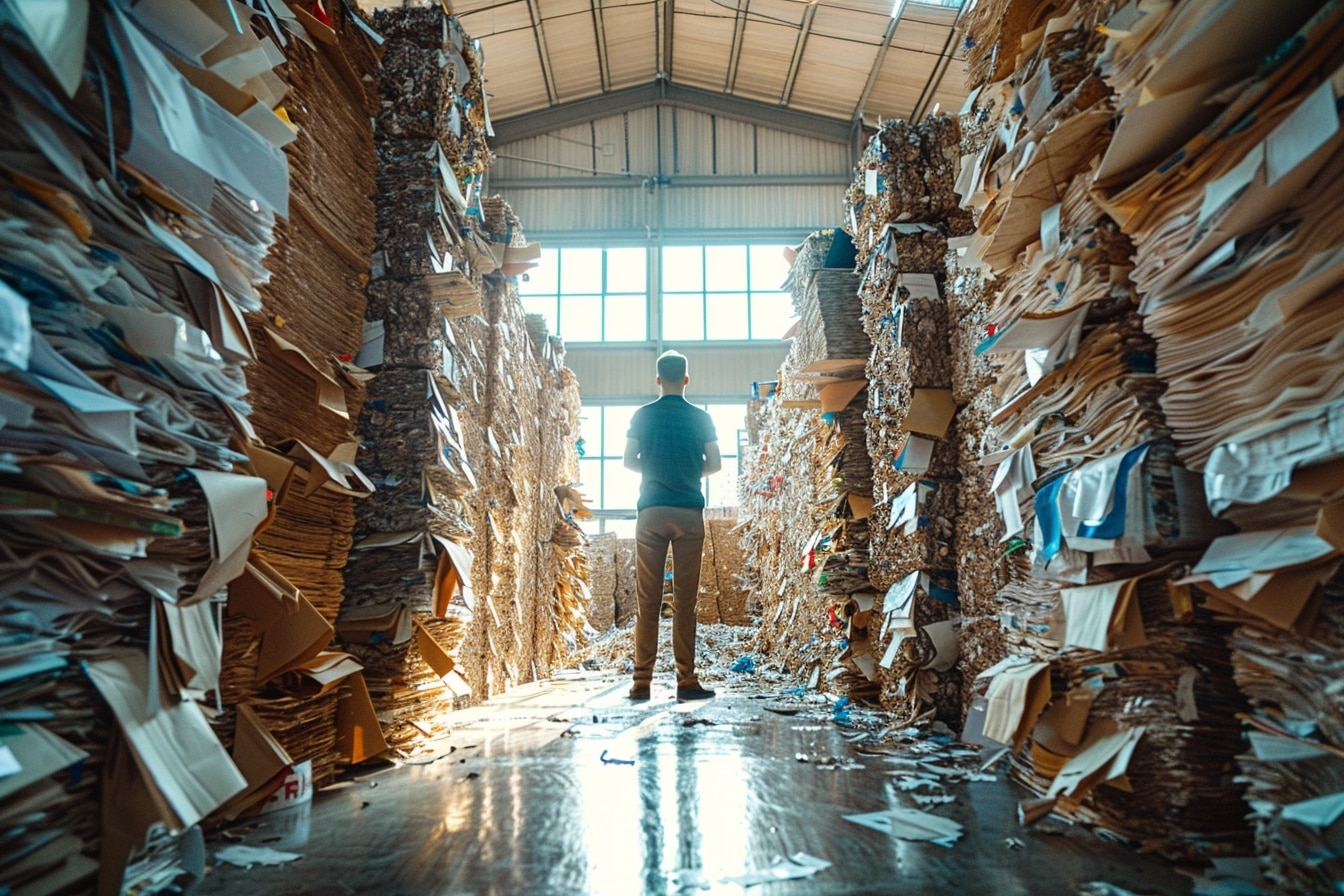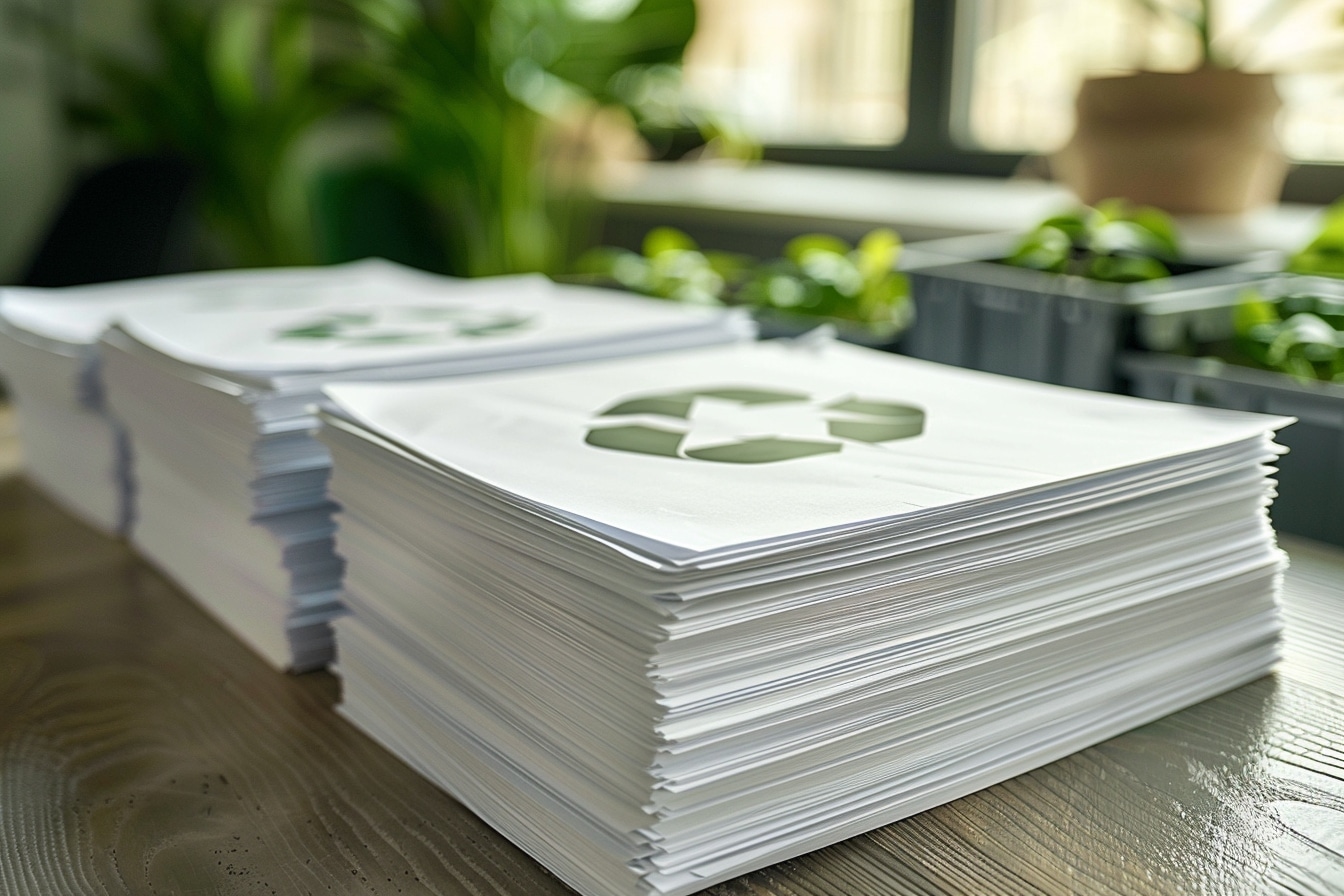Saving Forests One Tonne at a Time: The Environmental Impact of White Paper Recycling

Paper recycling is a process that transforms waste paper into new products, reducing the need to cut down new trees. At a time when environmental concerns are paramount, recycling is an effective way of preserving our precious forests. According to various studies, recycling just one tonne of white paper can save around 17 mature trees. This figure illustrates the direct impact that our recycling actions can have on the conservation of forest ecosystems and biodiversity.
A simple act with multiple benefits

Engaging citizens in paper recycling is not only an altruistic gesture towards nature; it’s also an eminently practical action that supports our environment. Saving trees is just one aspect of the ecological benefits of paper recycling.
Water and energy conservation
The process of making paper from recycled fibers requires significantly less water and energy than the production of new paper. Statistics show that using recycled paper saves up to 50% water and 60% energy. These substantial savings underline the importance of recycling, not only to protect natural resources, but also to reduce the energy footprint of industries.
Reduced waste and pollution
When paper is recycled, the volume of waste sent to landfill is considerably reduced. This is all the more relevant when you consider that paper makes up a significant proportion of municipal waste. Less waste means less landfill pollution, including emissions of methane, a much more potent greenhouse gas than carbon dioxide.
Impact on greenhouse gas emissions
Recycling paper contributes to a significant reduction in greenhouse gas emissions. By limiting the cutting of new trees, we preserve them as carbon sinks, enabling them to continue absorbing atmospheric CO2. What’s more, recycled paper requires less energy to convert, which reduces emissions from production plants.
Paper recycling efficiency: perception versus reality

Despite the promising figures, some might question whether recycling is truly effective. Our society produces such an enormous quantity of paper that the argument of inefficiency is sometimes heard. However, this perception fails to take into account the extended life cycle of paper thanks to recycling. Each fiber reprocessing cycle produces a product that can be reused several times, extending the life of the original fibers and reducing the pressure on virgin forests.
The different types of paper and their recyclability
Not all paper is equal when it comes to recycling. White office paper, for example, has high-quality fibers that can be recycled more frequently. Newspapers, magazines and corrugated cardboard follow closely in recyclability potential. Choosing products made from recycled paper increases demand for this green sector and encourages more sustainable resource management.
Transforming waste paper management
Enlightened management of waste paper is essential to achieving optimum recycling rates. Separating waste according to paper type and eliminating contaminants are fundamental steps in guaranteeing the quality of recycled paper. Raising awareness of these practices among consumers and businesses is therefore imperative.
Obstacles to paper recycling and how to overcome them

Contamination remains the main enemy of paper recycling. Paper soiled with food or other non-recyclable materials can compromise the quality of the recyclate. What’s more, ink, staples or the presence of plastic can pose technical problems during recycling. Overcoming these obstacles requires better product design and a collective effort to maintain the purity of the recyclable paper stream.
Innovation and technological progress
Advances in recycling technologies are broadening the potential of what we can recycle. New processes enable fibers to be separated more efficiently and inks to be treated to produce higher-quality recycled paper. These innovations are crucial to securing the future of paper recycling.
The importance of individual and collective action
Everyone can play a part in the success of paper recycling. By sorting waste and choosing recycled products, everyone contributes to a virtuous circle of resource management. It is equally essential that governments and businesses adopt policies and practices that encourage recycling and sustainable consumption.Making the choice to recycle today is a step towards a greener future. Considering all the ecological benefits of recycling, from saving trees to reducing pollution and water and energy consumption, it’s undeniable that paper recycling is a major component of a successful environmental strategy. So it’s vital for each and every one of us to recognize the impact of our consumption and waste management habits, and take an active role in preserving our ecosystem for future generations.
Comments
Leave a comment